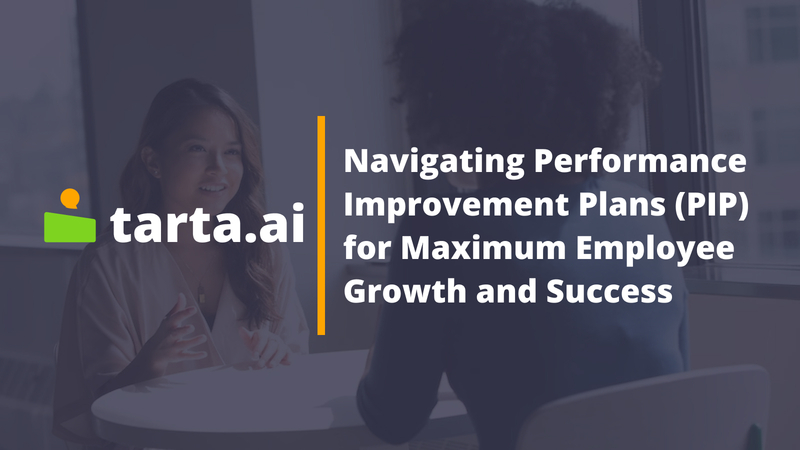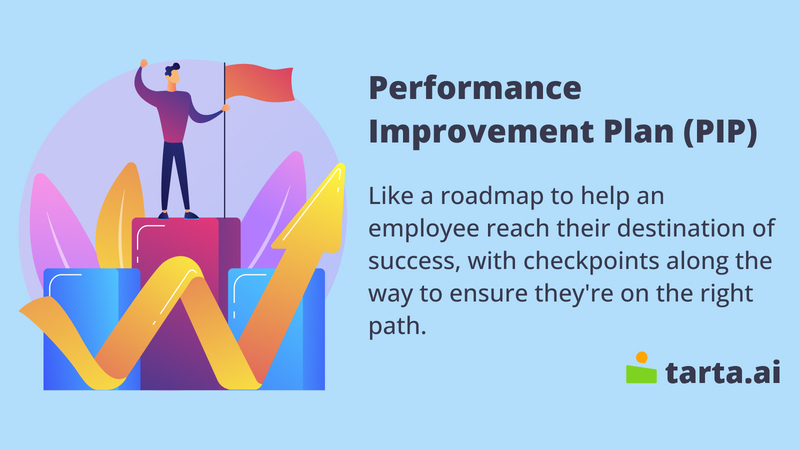Navigating Performance Improvement Plans (PIP) for Maximum Employee Growth and Success

A Performance Improvement Plan (PIP) is a structured document that outlines specific goals and expectations for an employee who is not meeting job performance standards. PIPs are typically used as a tool for helping employees improve their performance and meet the organization's expectations, and they can play an essential role in promoting employee growth and success.
In this article, we will explore the key aspects of navigating PIPs successfully, including how to identify the need for a PIP, create a successful plan, communicate the plan effectively, monitor progress, and adjust the plan as needed. We will also discuss how PIPs can serve as a launchpad for employee growth and development, and provide strategies for continuing to support and encourage employee success beyond the PIP period. By following the guidance provided in this article, managers and supervisors can help their employees succeed and thrive in the workplace.
Identifying the Need for a Performance Improvement Plan (PIP)
One of the primary purposes of a Performance Improvement Plan (PIP) is to help employees who are struggling to meet job performance standards. Identifying the need for a PIP early can be crucial in ensuring that an employee has the best possible chance to succeed.

Some signs that an employee may be struggling or not meeting expectations include:
- Consistently failing to meet deadlines or complete tasks
- Receiving negative feedback from coworkers or customers
- Making errors or mistakes that impact the quality of work
- Displaying a lack of attention to detail or poor judgment
- Failing to follow established policies and procedures
- Displaying a negative attitude or poor work ethic
It's important to address performance issues early to prevent them from escalating and potentially leading to more significant problems down the road. By identifying the need for a PIP early, managers and supervisors can help employees understand what is expected of them and provide the support they need to improve their performance.
Creating a Successful Performance Improvement Plan (PIP)
Once the need for a Performance Improvement Plan (PIP) has been identified, the next step is to create a plan that will help the employee improve their performance. A successful PIP should include the following elements:
- Setting clear and specific goals and expectations: The PIP should outline specific goals and expectations that the employee is expected to meet. These goals should be measurable, achievable, and relevant to the employee's job responsibilities.
- Providing resources and support to help the employee improve: The PIP should include resources and support that will help the employee achieve their goals. This may include training, coaching, mentoring, or access to other resources that can help the employee improve their skills and knowledge.
- Collaboration between the employee and manager/supervisor: The employee and manager/supervisor should work together to create the PIP and establish a plan for achieving the goals outlined in the plan. Collaboration can help ensure that the plan is realistic and achievable, and that the employee has the support they need to be successful.
When creating a PIP, it's important to keep in mind that the goal is to help the employee improve their performance, not to punish or discipline them. The PIP should be viewed as a positive tool for promoting growth and development, and should be communicated in a supportive and constructive manner.
Communicating the Performance Improvement Plan (PIP)
Clear and direct communication is essential when delivering a Performance Improvement Plan (PIP) to an employee. Effective communication can help ensure that the employee understands what is expected of them and has the support they need to succeed.

Photo: JESHOOTS.COM/Unsplash
Here are some strategies for delivering the PIP in a supportive and constructive manner:
Strategy | Description |
Be clear and direct | Use clear and straightforward language to communicate the goals and expectations outlined in the PIP. Avoid using jargon or technical language that may be difficult for the employee to understand. |
Provide context | Explain why the PIP is necessary and how it fits into the employee's overall job performance. Provide specific examples of areas where the employee needs to improve and how their performance is impacting the organization. |
Be supportive | Emphasize that the PIP is designed to help the employee improve their performance and achieve their goals. Offer support and resources to help the employee succeed. |
Encourage dialogue | Encourage the employee to ask questions and provide feedback. This can help ensure that they understand the PIP and feel comfortable asking for help or clarification. |
Follow up | Schedule regular check-ins with the employee to monitor progress and provide additional support or feedback as needed. |
By delivering the PIP in a supportive and constructive manner, managers and supervisors can help the employee feel valued and supported, which can be critical for their success.
Monitoring and Measuring Progress
Once the Performance Improvement Plan (PIP) has been communicated to the employee, it's essential to monitor progress regularly to ensure that the employee is making progress toward their goals. Regular check-ins can help identify areas where the employee is excelling and areas where additional support may be needed.

Photo: Adomas Aleno/Unsplash
Here are some strategies for monitoring progress and providing ongoing feedback and support:
- Schedule regular check-ins: Set a schedule for regular check-ins to monitor progress and provide feedback. The frequency of these check-ins will depend on the employee's individual needs and the goals outlined in the PIP.
- Track progress: Use metrics and other data to track progress toward the goals outlined in the PIP. This can help identify areas where the employee is making progress and areas where additional support may be needed.
- Provide ongoing feedback: Provide ongoing feedback to the employee to let them know how they are doing and where they need to improve. Be specific and provide examples of areas where the employee is excelling and areas where they need to focus their efforts.
- Adjust the PIP as needed: If the employee is not making progress toward their goals, it may be necessary to adjust the PIP. This may involve setting new goals or providing additional support and resources to help the employee succeed.
By monitoring progress regularly and providing ongoing feedback and support, managers and supervisors can help ensure that the employee stays on track and continues to make progress toward their goals. In the next section, we will discuss the potential outcomes of a successful PIP.
Adjusting the Performance Improvement Plan (PIP) as Needed
One of the key benefits of Performance Improvement Plans (PIPs) is their flexibility. PIPs can be adjusted to changing circumstances or goals to help maximize the employee's chances of success. This can be especially important if the employee is not making progress toward their goals or if their circumstances change. Here are some strategies for adjusting the PIP as needed:
Strategy | Description |
Reassess the PIP regularly | Schedule regular check-ins to reassess the PIP and determine if any adjustments are needed. This may involve setting new goals or providing additional support and resources to help the employee succeed. |
Be flexible | Recognize that circumstances may change and that the PIP may need to be adjusted to reflect these changes. Be willing to modify the PIP as needed to help the employee achieve their goals. |
Communicate changes clearly | When making changes to the PIP, be sure to communicate them clearly to the employee. Explain why the changes are necessary and how they will help the employee achieve their goals. |
By being flexible and willing to adjust the PIP as needed, managers and supervisors can help ensure that the employee has the support they need to succeed.
Supporting Employee Growth and Success Beyond the Performance Improvement Plan (PIP)
While Performance Improvement Plans (PIPs) are often viewed as a tool for addressing performance issues, they can also serve as a launchpad for employee growth and development. By setting clear goals and expectations and providing support and resources to help the employee improve, PIPs can help employees develop new skills and improve their overall performance.

Photo: Christina @ wocintechchat.com/Unsplash
Here are some strategies for continuing to support and encourage employee success beyond the PIP period:
- Provide ongoing feedback: Even after the PIP period has ended, continue to provide feedback to the employee. Let them know how they are doing and provide constructive feedback to help them continue to improve.
- Offer training and development opportunities: Identify training and development opportunities that can help the employee build on the skills they developed during the PIP period. This may involve providing additional training or mentoring opportunities.
- Set new goals: Work with the employee to set new goals that will help them continue to grow and develop. These goals should be challenging but achievable and should align with the employee's career aspirations.
- Celebrate successes: When the employee achieves a significant milestone or achieves a goal, take the time to celebrate their success. This can help build morale and keep the employee motivated to continue to improve.
By continuing to support and encourage the employee beyond the PIP period, managers and supervisors can help ensure that the employee continues to grow and develop and achieve long-term success.
In conclusion, Performance Improvement Plans (PIPs) are an important tool for promoting employee growth and success. By identifying areas for improvement and providing support and resources to help the employee improve, PIPs can help employees develop new skills and improve their overall performance.
- Identify the need for a PIP early on and address performance issues promptly.
- Create a PIP that sets clear and specific goals, provides resources and support, and fosters collaboration between the employee and manager/supervisor.
- Communicate the PIP clearly and constructively, and provide ongoing feedback and support.
- Monitor and measure progress regularly, and adjust the PIP as needed to maximize success.
- Support employee growth and success beyond the PIP period by continuing to provide feedback, offering training and development opportunities, setting new goals, and celebrating successes.
By following these strategies, managers and supervisors can help ensure that PIPs are a positive experience for both the employee and the organization, and that they lead to long-term growth and success.
Remember, the ultimate goal of a PIP is to help the employee improve and succeed, not to punish or discipline them. By approaching PIPs in a positive and constructive manner, managers and supervisors can help create a culture of growth and development that benefits everyone involved.
FAQ
Who is involved in creating a PIP?
Typically, the employee's immediate supervisor or manager is responsible for creating a PIP, in collaboration with HR and any other relevant stakeholders.
How long does a PIP typically last?
The length of a PIP can vary depending on the specific situation, but it is typically around 30 to 90 days.
How should a PIP be presented to an employee?
It is important to present a PIP to an employee in a respectful and professional manner. It is recommended to schedule a meeting with the employee to discuss the plan, go over the goals and objectives, and answer any questions they may have.
Can an employee be terminated immediately after a PIP?
In most cases, an employee cannot be terminated immediately after a PIP. It is important to allow the employee a reasonable amount of time to meet the goals and objectives outlined in the plan.